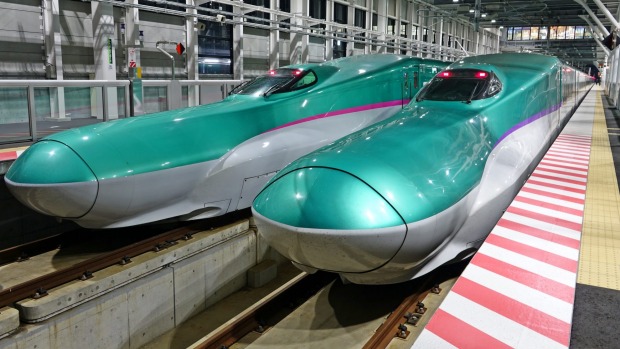For all the innovation and technological advances modern humanity has made and continues to make, we have one bad habit we seem unable to break. It always seems that as soon as one major problem is dealt with. It is always a matter of the next disaster, the problem at hand, the pressing concern, and then as soon as it no longer seems to be a matter of life and death that must be immediately dealt with, it's no longer dealt with at all, it is relegated to the back of the line as new crises take its place, sometimes the new crises arising directly from the solutions that were implemented to solve previous crises.
Biomimicry offers another way of doing things that is not based on this endless cycle of damage control, another way of looking at things. Long before humankind was designing and constructing anything, quite frankly long before humankind existed, nature was designing all sorts of complex structures. And the end result exists all around us, endless blueprints that contain fascinating and elegant solutions to problems that we have never considered.
“You could look at nature as being like a catalog of products, and all of those have benefited from a 3.8 billion year research and development period. And given that level of investment, it makes sense to use it.”
Nature does not see a problem and then set out to find a solution. Rather, nature reacts to the present reality not with solutions but adaptations. It takes what is already there and builds what will fit. The designer that is nature doesn’t look for problems to solve, but opportunities to grow and to innovate.
When we look at one of the most famous examples of biomimicry, it’s easy to view the innovation as being born to solve a problem. The shape of the front of the Shinkansen bullet train used the inspiration of the design of the kingfisher bird’s beak in order to solve the solution of the loud tunnel boom that was created when the train transitioned from different air pressures at extremely high speeds when it exited a tunnel. And while the engineer, Eiji Nakatsu, did use his love of bird watching to solve that problem, that same solution also led to the Shinkansen train traveling 10% faster while using 15% less energy. Those are pretty great side effects to have when implementing the solution to a problem: it will fix the problem, but also it will save money, be more efficient and better for the environment. That is quite the win-win, but it’s not a coincidence that the solution that comes from nature provides results that are even better than what was originally needed.
When nature, the designer, designed the kingfisher’s beak, it didn’t say, “well the problem is that the kingfisher needs to go from air to water without making a splash,” and then make a beak that provided a solution to the splashing problem. Rather there were once some birds, the ancestors of the kingfishers that had a beak that was especially well-shaped for going from air to water. And those birds successfully caught and ate fish and had offspring and passed on the effective shapes of their beaks to the young that were successful to survive and have offspring of their own. And as the beaks changed over time, it wasn’t the beaks that were best shaped to minimize splashing that were naturally selected, rather it was the beaks that were most effective overall, the ones that allowed the bird to move most efficiently, using the least amount of energy and allowing the bird to most effectively catch its prey. And that’s what we get every time we use nature the designer as our inspiration. Designs that have been created not to solve problems but to find and create opportunities to flourish.
And as we look to biomimicry in the context of climate change it’s important to remember this. While we are staring down what can so easily seem to be an insurmountable challenge, we must not lose sight of the fact that biomimicry is not just for a solution but also a different worldview. This innovation inspired by coral reefs to create cement from carbon gas is a great illustration of a use of biomimicry to combat climate change in a way that does not simply offer a solution but creates opportunity. The coral reef did not just find a way to solve the problem of how polluting the creation of cement is, it actually used the same pollutant to create the cement. This solution did not merely reduce the carbon emissions, but it could reduce the overall carbon in the atmosphere, while creating a desired material. Right now, as we race to contain the effects of climate change, it’s so easy to view carbon as the enemy, what we must eliminate. But one of the most important lessons of biomimicry is that it is never so simple as good and bad, but how you can use what is already there most effectively and to create the best opportunities. Nature has been operating in a world with carbon for a long time now, and its systems are not designed to battle carbon, but to use carbon as a building block, so it remains in balance with all of the parts of the whole. Yes, we need a solution to climate change, but we also need a new way of looking at things moving forward. We hope you’ll join us at Walden Gathering in order to explore how we can use biomimicry not just to solve humanity’s greatest problems, but to seek a world in which humankind lives in balance and flourishes.
Join us for Walden Gathering focused on utilizing biomimicry to combat climate change - April 19th.


